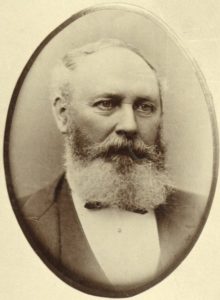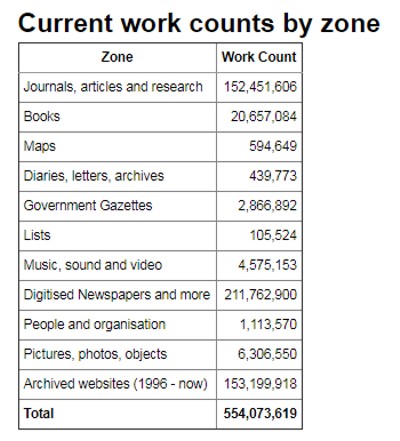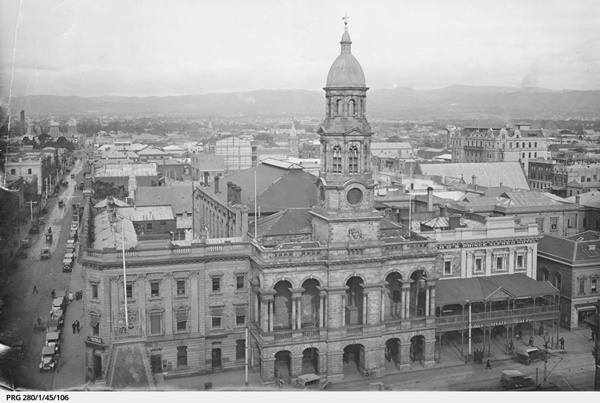Valentine’s Day is “as dead as Julius Caesar”
Valentine’s Day is just a hyped up, money making day. There I said it!!
[Note: that is entirely my personal opinion here. No offence to those who love the day, but I feel why have ‘a’ day when you’re simply ‘expected’ to give something, when it’s so much nicer to receive an ‘out-of-the-blue-no-reason-needed’ gift.]
Flowers, chocolates, jewellery, a card and/or other romantic gifts … it is what you ‘should’ give your loved one right? Not necessarily. But it is certainly what we’ve been programmed to think.
Anyway it certainly wasn’t always the case. In fact in the early 1900s Valentines Day had all but died out. That sure has changed!!
ST. VALENTINE’S DAY.
Wednesday was St. Valentine’s Day, but perhaps few people knew it outside of those who are diligent students of their calendars. The old practice of sending valentines has almost if not completely died out. A leading bookseller reports that it is as “dead as Julius Caesar;” that most stationers do not stock valentines nowadays; and, moreover, that people never ask for them. The circulating of extraordinary caricatures is now almost entirely in the hands of the satirical papers, and if a remarkable event were to happen on February 14 there is a probability of St. Valentine’s Day not even being remembered by tie publishers of calendars.
But as the years went by, the tradition was starting to gain a foothold again., and according to the Albury Banner and Wodonga Express from Friday 11 July 1919 we can blame the Americans for it!
VANISHING VALENTINES.
Although the custom of sending valentines is very nearly dead in England, it may, perhaps, be revived by the American soldiers over here, for St. Valentine’s Day is much more popular in America than on this side of the water. There dainty valentines are sold for a dollar each, and, some of the more elaborate ones are sold for fifty dollars about ten pounds.
By 1939 Valentine’s Day was indeed ‘being revived’. The Mudgee Guardian and North-Western Representative newspaper from Thursday 16 February 1939 reports the following …
ST. VALENTINE’S DAY
The feast of St. Valentine, a Roman priest who was martyred under Claudius II. during the persecution in 270, was celebrated on Tuesday, February 14, by the sending of valentines and other tokens of remembrance or affection. This observance of St. Valentine’s Day appeared to be dying but has recently been revived, and several local residents on Tuesday received little tokens In honor of this quaint and ancient custom.
So Happy Valentine’s Day everyone, but remember there are 364 other days that you can show your love appreciation for the special person in your life as well.
The Train, the Explosion, and the Parliamentarian
The year was 1890, and …
“a most painful accident, of a character unparalleled in the annals of railway accidents in this colony, if not in Australasia, occurred on the Northern line on Friday evening, Jan. 17. The terrible calamity which befel … was so sudden, and its effects so appalling, that the harrowing details were listened to with bated breath and unconcealed sorrow.”
That’s how the long article about the tragic death of well-known South Australian businessman and parliamentarian, Honorable James Garden Ramsay, M.L.C. begins.
James Ramsay was born in Edinburgh, Scotland in 1827, did an apprenticeship as an engineer at the St Rollox Ironworks in Glasgow, and then emigrated to South Australia in 1852. He established an agricultural implement and machine manufacturing plant at Mount Barker, which represented the starting point of what later grew into the largest business of its kind in the colony. Apart from his Mount Barker business, he opened up agricultural implement manufacturing businesses in Adelaide, Clare and Laura as there was a huge demand.
Anyway J.G. Ramsay’s interest in politics began in the 1860s, and in 1870 he entered Parliament for Mount Barker, and from then until his death he held various parliamentary positions. The article says …“Altogether he served over five years as a Minister of the Crown. As leader of the Legislative Council he exhibited considerable tact and ability, and possessing the confidence of his fellow members, he was eminently successful in conducting the business”.
Which then brings us back to Friday evening, 17 January 1890 when James Ramsay is travelling back to Adelaide, from Saddleworth, South Australia by train. Travelling with Mr Rounsvell (a fellow M.P.), who by the time the train reached Riverton left to go to the smoking carriage, after which Mr Ramsay fell asleep while reading the newspaper. The following is the report of what happened …
“The Hon. gentleman was left by himself, and he laid down on the seat, and after reading a newspaper fell asleep. Just before the train reached Stockport he was awakened by a loud report, which proved to be the bursting of the lamp, and in an instant he was all ablaze, the burning oil falling all over him. He tried to open the door of the carriage, but was unsuccessful, and it was not until the train arrived at Stockport that he was enabled to roll on to the ground in a terrible condition. Assistance was at once procured, and he was wrapped in a rug and some bags, the flames in this way being extinguished. It was then seen that Mr. Ramsay was in a very serious condition, and that he was suffering the most acute pain. Telegrams were dispatched to Gawler and Adelaide, and at the former place the sufferer was met by Dr. Popham, who advised his being conveyed on to Adelaide.”
Badly burnt, Mr Ramsay was met at the Adelaide train station by Dr Marten, his brother John Ramsay and a waiting ambulance.
“Dr Marten found him very much collapsed, suffering greatly from the shock. He was lying on the floor of the carriage, partially covered with rags, most of his clothes being burnt off. He was at once removed int he ambulance van the Patients’ Home on South-terrace, where his wounds were dressed by Dr. Marten. He still retained consciousness, notwithstanding the effects of the shock. The extent of the injuries were then ascertained, and the sufferings of the unfortunate gentleman must have been intense. He was burnt from head to foot, the skin being taken off from all parts with the exception of the head. His beard was completely destroyed, and his eyebrows and eyelashes singed. Te skin came off the left hand like a glove, the left having suffered more than the right, the burns extending up to the armpit. The injuries were greatest about the abdomen and the arms, though the whole body was badly burnt.”
His wife who was at Mount Barker at the time, was advised of the accident on Friday evening, and made her way to the city, reaching Adelaide by 5am on Saturday morning. However, sadly due to the severity of the burns, James Garden Ramsay passed away on Saturday 18 January 1890, at about 10.30am.
He was a migrant who certainly left his mark in South Australia in business, politics and the local community where he lived. This shows simply by the number of articles written in newspapers all around Australia about his death (over 8500. Yes, seriously!!).
Thanks to Trove, you can read the FULL article about the accident from the report in the Adelaide Observer, Saturday 25 January 1890, click here, and for further information, click on the links below.
More information:
James Garden Ramsay on Wikipedia
Read the Adelaide Observer article in full here
You can find details of the inquest here
His obituary is printed in the South Australian Register here
And for odles more articles on his death click here
Trove – Eight Years of Incredible Discoveries
Eight years ago, the way of historical and genealogical research in Australia changed forever. Trove went live.
Created by the National Library of Australia, the Trove website is a portal to their absolutely incredible collection of records.
By “absolutely incredible”, I’m talking millions of records. But not “just” millions. How about 554,000,000 of them? That’s right, over HALF A BILLION of them in fact! All online and all free to search. So how lucky are we?
There’s no doubt that Trove is Australia’s number 1 website for research. If it’s not yours, it should be! So go and bookmark it www.trove.nla.gov.au now.
If you’re not familiar with Trove, take a quick look at the videos below that give you a quick overview, of what it is, and the different facets to it.
So you’ll find photos, journals and articles, archived websites, government gazettes, music, sound and video recordings, diaries and letters, maps and books, even vintage issues of the Women’s Weekly magazine. They all make up the phenomenal collection of Australian history that the National Library of Australian (NLA) looks after. For more a detailed analysis on using Trove and all it’s facets, check out Shauna Hicks’ “Trove: Discover Genealogy Treasure in the National Library of Australia“.
However what most researchers (myself included) head to Trove for, is their historical newspaper collection. And why wouldn’t we, they are so fun. And with over 200 million pages of old newspaper online already – there are so many stories just waiting to be found.
The blog theme “Trove Tuesday” was started back in 2012 by Amy Houston of the Branches Leaves and Pollen blog, [note, I know the link has changed, but I still wanted to give her the credit], and through its creation, has inspired so many to find and share their amazing discoveries using Trove.
Just having a quick look through my own Trove Tuesday posts, and I’ve done articles on obituaries, the opening of a butter factory, drink ‘driving’, a hanging, a duel, several WW1 and WW2 related entries, local football match, Adelaide’s water supply, gold, South Australian pioneers, an earthquake, Christmas, the plague, a sudden death, a ploughing match … and so much more.
None of this would have been easily accessible without the online newspapers on Trove. The detail in a newspaper article is often better than you’ll find anywhere else , so it is a valuable source of information.
So I wish to say a huge CONGRATULATIONS to the National Library of Australia team for Trove’s 8th birthday, and THANKYOU, THANKYOU, THANKYOU for giving us the present of Trove.
And one last note, if you come across the following terms, here are their definitions:
– BT – before Trove
– pre-Trove – life before Trove
– post-Trove – life after Trove went live
– Troveite – a person addicted to searching Trove’s newspapers
and for even more Trove related lingo, be sure to check out a heap more at Carmel’s Library Currents blog
Related Articles:
13 Tips For Searching Trove’s Historical Newspapers
The Duel in the City of Adelaide
A duel is something you associate with westerns. Two cowboys pacing it out on a dusty street before turning around, and drawing their guns as quick as possible. And usually the fastest one wins.
So when I found out that there was a duel in my hometown city of Adelaide, South Australia naturally I was intrigued, and had to check it out further.
There was no cowboys, or dusty streets, or tumbleweeds in this duel … (actually the streets may well have been dusty still at this stage), but certainly no cowboys or tumbleweeds. Instead we had politicians!
The two players in this duel are Charles Cameron Kingston, Q.C. & M.P., (1850-1908) and Richard Chaffey Baker, M.L.A. (1841-1911). The scene was the Adelaide Town Hall, on King William Street, Adelaide, and the time was 1.30pm, on Friday, 23 December 1892 … and it all started over name calling!
The Australian Dictionary of Biography sums up the who episode quite succinctly in the following paragraph …
“The most dramatic and colorful episode in Kingston’s political career occurred in 1892. After a prominent conservative member of the Legislative Council, (Sir) Richard Baker, denounced him as a coward, a bully and a disgrace to the legal profession, Kingston responded by describing Baker as ‘false as a friend, treacherous as a colleague, mendacious as a man, and utterly untrustworthy in every relationship of public life’. Kingston did not stop there. He procured a pair of matched pistols, one of which he sent to Baker accompanied by a letter appointing the time for a duel in Victoria Square, Adelaide, on 23 December. Baker wisely informed the police who arrested Kingston shortly after he arrived, holding a loaded revolver. Amidst widespread publicity he was tried and bound over to keep the peace for twelve months. The sentence was still in force when he became premier in June 1893.”
But the best description I’ve found of the whole saga (and there’s literally hundreds on Trove), is one from a Sydney newspaper, The Daily Telegraph, dated Saturday 24 December 1892 …
“Considerable excitement was caused in the city to-day when a rumor gained currency that Mr. C. C. Kingston, Q.C., M.P., had challenged Mr. R. L. Baker, M.L.C., to a duel over a feud which lately has been brought prominently before the public in Parliament and elsewhere. Many rumors are in currency with reference to the affair. As far as can be ascertained the facts are these.”
It goes on …
“A messenger called at Mr. Baker’s office in the city with a package and a letter from Mr. Kingston, which was stated to be “important” by the messenger. Mr. Baker was attending a meeting of the Queensland Mortgage Company, of which he is chairman of directors, and did not receive the communication till 1 o’clock. The letter asked Mr. Baker to meet Mr. Kingston in front of the Town-hall at 1.30 that day. The package accompanying the letter contained a revolver and cartridges. The police were communicated with on the matter; and Detective Kitson and Constable Rea awaited near the square at the time appointed. It is understood that Mr. Baker sent word to Mr. Kingston that he would attend as requested. At the hour named Mr. Kingston, with a six-chambered revolver, fully loaded, went to the square, where he was taken charge of by the officers of the law. It is stated that Mr. Kingston resisted the efforts of the police to secure possession of his revolver, and that Mr. Baker also kept his appointment. Mr. Kingston was detained at the police station for some time, and then released.”
The article goes into what provoked the reaction:
“The trouble arose as follows: Mr. Baker, in a letter to Sir Edwin Smith, which was read in tho Assembly, attacked Mr. M’Pherson and the Trades and Labor Council, whereupon Mr. Kingston severely criticised Mr. Baker’s conduct. Tho latter replied in the Council in a speech in which he stigmatised Mr. Kingston as a “bully and a coward,” and said that the Wheat Rates Committee had found him “guilty of untruth.”
Questions were later asked of Mr Baker as to why he declined taking part in the duel, the following article from the Wagga Wagga Advertiser, on 31 December 1892 explains his reasons
“I had two reasons,” continued Mr. Baker, ” for declining a meeting with Mr. Kingston. One was that, though I was not afraid of him, or of being shot by him, I was afraid of breaking the law and of either being hung for murder or sent to gaol for the rest of my life. Under these circumstances I left the matter entirely in the hands of the Government, in the full belief that the Government would vindicate the law. “
So, yes a duel was scheduled … but no, it never actually happened, thanks to the authorities being notified. But even so, what a sensation it caused. And if you want to read more about it, here’s a link to over 200 articles on Trove about it.







